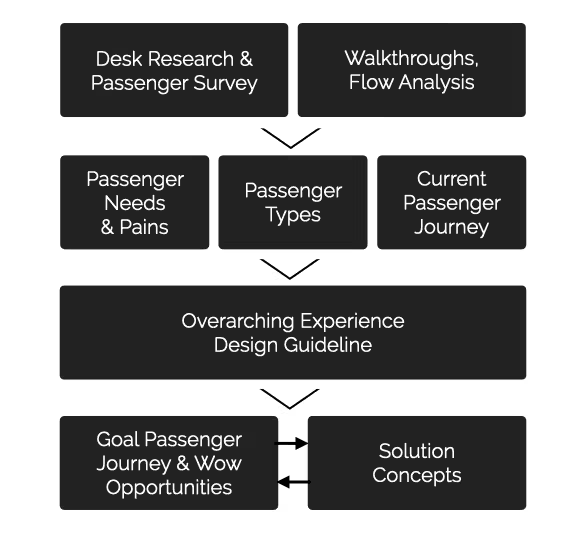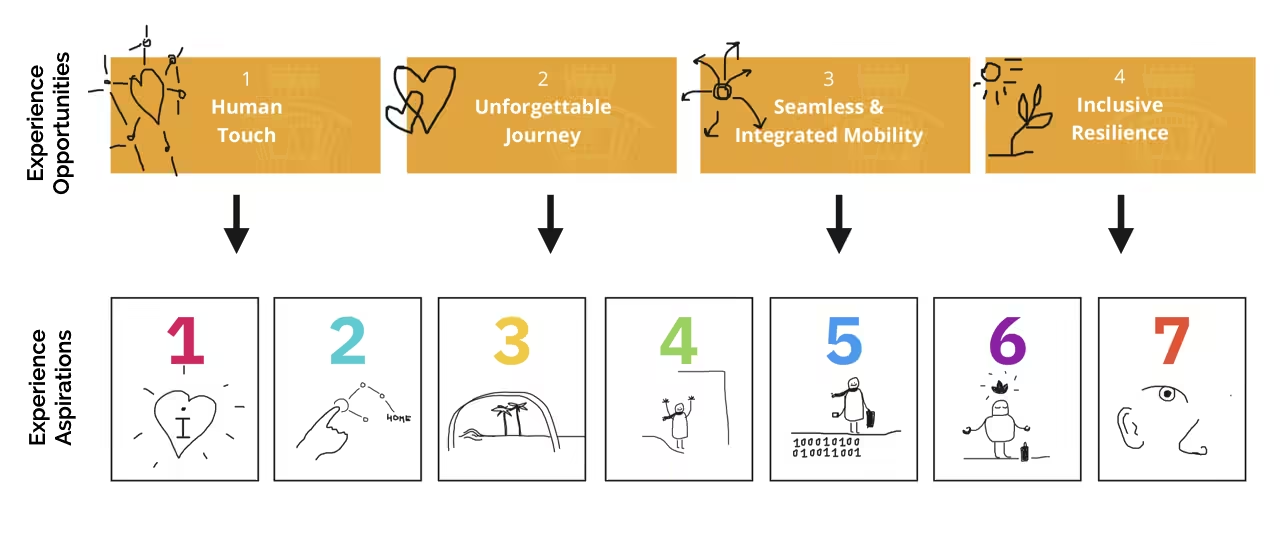A major US airport, ranking among the top in the country by passenger volume, was expanding its campus with a new terminal and dedicated access roads. The airport commissioned Rlevance alongside a Dutch architectural firm to develop the airport passenger experience. The goals: meet the evolving needs of today’s travelers, unlock revenue potential for the client, and offer a blueprint for enhancing existing terminals. Rlevance led the development of the experience strategy through passenger journey mapping and spatial and service innovation to shape a next-generation airport passenger experience.


In the next step we developed concept ideas aligned with the strategic framework, user needs and commercial goals. They would guide the terminal’s physical layout, features and services offered, and employee behavior. These included a digital travel companion, purpose-built waiting zones, partnerships with cultural institutions, and intuitive wayfinding designed as architectural landmarks—all integrated seamlessly into the spatial layout. These concepts were designed to reduce stress, enrich the airport passenger experience, and open up entirely new commercial opportunities.

The outcome is a forward-thinking airport passenger experience concept – focused on reducing stress, enhancing enjoyment, and unlocking new commercial opportunity. While specific ideas remain confidential, our work influenced the terminal’s spatial design and will serve as a strategic foundation when the terminal opens by 2028. Our work also led to a range of learnings and a blueprint for transforming existing airport passenger experiences, which can be found in this article.
Are you faced with similar corporate challenges? We would love to hear about them.
Share: